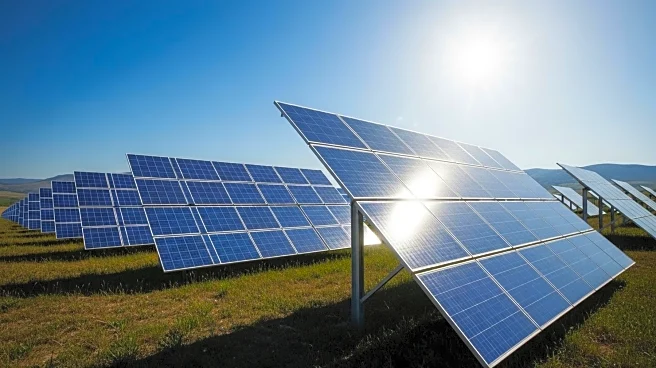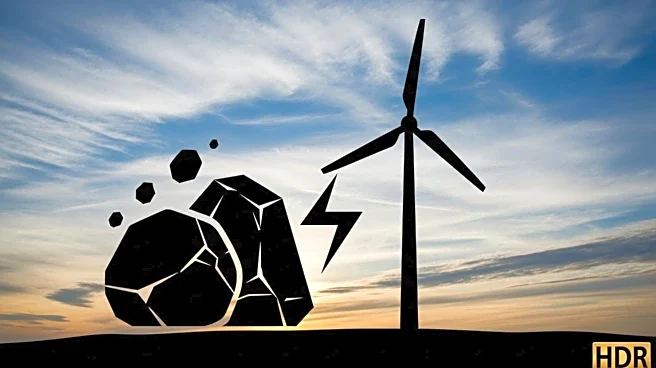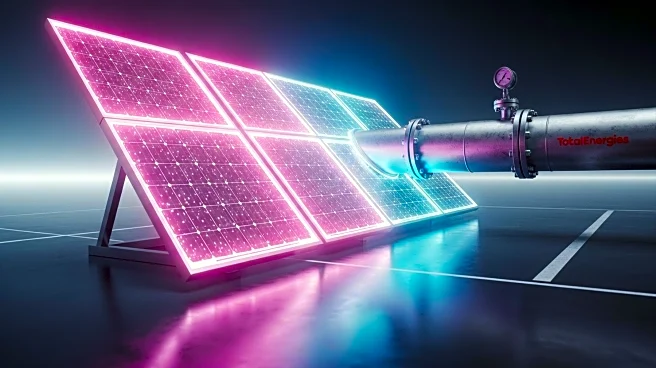What is the story about?
What's Happening?
The United States is witnessing a significant shift in its energy landscape, with solar power poised to surpass both wind and coal in terms of electric generation capacity by 2025. According to the Federal Energy Regulatory Commission (FERC), solar energy has added 16 gigawatts (GW) of capacity through July 2025, representing nearly 75% of the total 21.5 GW of new electric generation capacity added this year. This growth positions solar as the leading source of new energy capacity, outpacing wind, which added 3.2 GW, and natural gas, which added 2.2 GW. The current energy mix is dominated by natural gas, which accounts for 42% of the U.S. grid's capacity, followed by coal at 14.8%, wind at 11.81%, and solar at 11.42%. FERC's projections indicate that solar will soon surpass wind and potentially coal, as no new coal capacity is expected to come online, and 63 coal plants are slated for retirement by 2028.
Why It's Important?
The rapid expansion of solar energy in the U.S. is a critical development in the nation's transition towards renewable energy sources. This shift not only supports environmental goals by reducing reliance on fossil fuels but also has significant economic implications. The growth of solar energy is likely to create jobs in the renewable energy sector, stimulate technological innovation, and reduce energy costs over time. Additionally, as coal plants retire and solar capacity increases, there will be a substantial reduction in carbon emissions, contributing to efforts to combat climate change. The transition also reflects broader global trends towards sustainable energy solutions, positioning the U.S. as a leader in renewable energy adoption.
What's Next?
Looking ahead, the U.S. energy sector is expected to continue its shift towards renewable sources, with FERC forecasting 92.6 GW of new solar capacity by July 2028. This would elevate solar's installed capacity to approximately 250 GW, significantly surpassing coal's projected 173 GW. The continued decline of coal and the rise of solar energy will likely prompt further policy and regulatory adjustments to support this transition. Stakeholders, including energy companies, policymakers, and environmental groups, will need to collaborate to ensure a smooth transition that maximizes economic and environmental benefits.
Beyond the Headlines
The transition from coal to solar energy also raises important considerations regarding energy grid reliability and storage solutions. As solar energy becomes a more dominant source, investments in energy storage technologies and grid infrastructure will be crucial to manage variability in solar power generation. Additionally, the shift may have socio-economic impacts on communities traditionally reliant on coal mining and production, necessitating targeted support and retraining programs to facilitate economic diversification and workforce transition.
AI Generated Content
Do you find this article useful?















